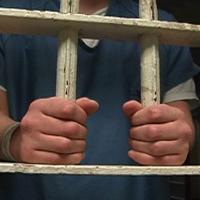State Supreme Court Retools Three-Strikes Law to be More Like Baseball

California Supreme Court Justice Kathryn Werdegar, reaching back to the original text that inspired the legal reasoning and moral underpinnings of the 1994 Three Strikes ballot measure, released an opinion (pdf) last week, unanimously supported, which loosens the rules that send people to jail for a very long time.
“The voting public would reasonably have understood the ‘Three Strikes’ baseball metaphor to mean that a person would have three chances—three swings of the bat if you will—before the harshest penalty could be imposed,” Justice Werdegar wrote. “The public also would have understood that no one can be called for two strikes on just one swing.”
And thus shall it ever be.
The court ruled that a person could not receive two strikes for a single offense, even if convicted on more than one count. That’s what happened to Darlene A. Vargas when she was found guilty of carjacking and robbery in a 1999 case before getting called out on a third strike for burglary, grand theft and conspiracy to commit grand theft in Claremont. Or five strikes, if one keeps counting.
In a tone that reflected surprise bordering on astonishment, the associate justice recalled the simple language of Proposition 184 as it ticked off escalating penalties for repeated criminal acts. Separate strikes for a single act “contravene the voter’s clear understanding of how the Three Strikes law was intended to work.”
It took 20 years for that “clear understanding” to be articulated by the High Court.
Justice Werdegar pointed out in a footnote that “neither grand theft nor conspiracy to commit grand theft would now qualify for Three Strikes treatment” because the law was amended in 2012 to reduce the types of crimes that qualify. It was not the first time that the court relaxed the hallmark of tough-on-crime legislation passed in the 1990s that limited judicial options, overstuffed the prisons and helped stress out a legal system no one wanted to pay for.
California passed Proposition 184 by a 72-28% margin 20 years ago, joining 23 other states over a three-year period in enacting harsh sentencing terms for repeat offenders. Supporters touted the get-tough deterrence effect, an expected reduction in crime, its moral correctness and social value.
Voters revised the law in November 2012 with Proposition 36. The third strike could only trigger a life sentence if it were serious or violent, and certain prisoners were eligible to apply for retroactive consideration. Stanford Law School’s Three Strikes Project page said it was the first voter initiative in California history to reduce the sentences of inmates.
There are around 9,000 inmates currently serving three-strike life sentences in California prisons and around 25% of all inmates have enhanced sentences.
–Ken Broder
To Learn More:
California Supreme Court Softens “Three Strikes” Sentencing Law (by Sharon Bernstein, Reuters)
Multiple Convictions from One Act Count as One “Strike,” Court Rules (by Maura Dolan, Los Angeles Times)
A Primer: Three Strikes - The Impact after More Than a Decade (Legislative Analyst’s Office)
Judge Orders Release of First Inmate under New Three-Strikes Law (by Ken Broder, AllGov California)
The People v. Darlene A. Vargas (California Supreme Court) (pdf)
- Top Stories
- Controversies
- Where is the Money Going?
- California and the Nation
- Appointments and Resignations
- Unusual News
- Latest News
- California Forbids U.S. Immigration Agents from Pretending to be Police
- California Lawmakers Urged to Strip “Self-Dealing” Tax Board of Its Duties
- Big Oil’s Grip on California
- Santa Cruz Police See Homeland Security Betrayal in Use of Gang Roundup as Cover for Immigration Raid
- Oil Companies Face Deadline to Stop Polluting California Groundwater





